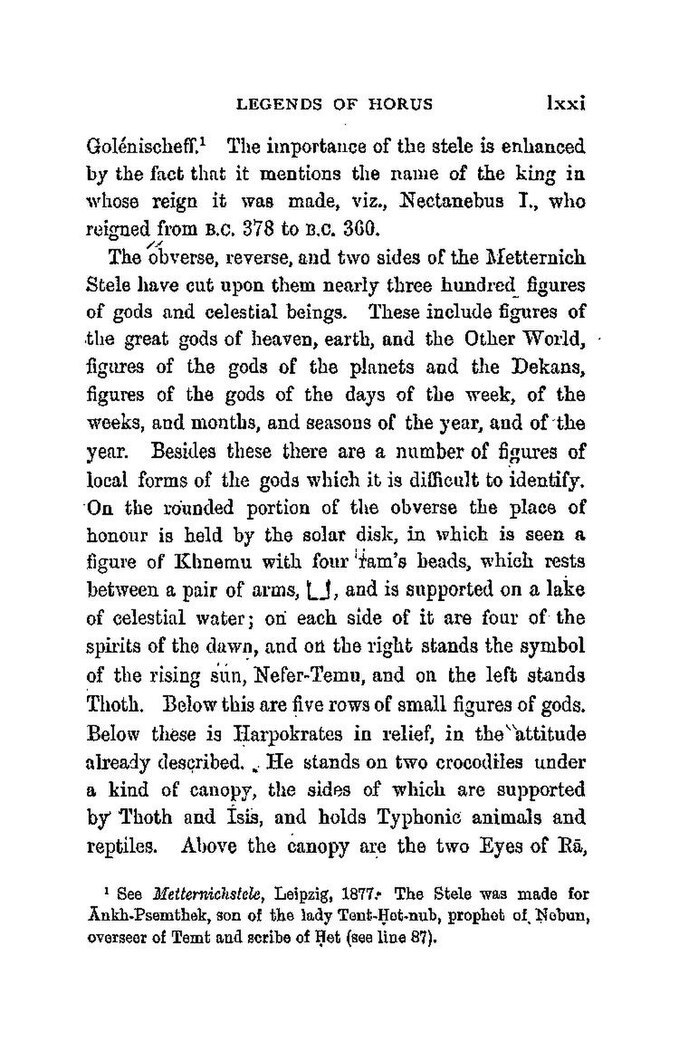Golénischeff.[1] The importance of the stele is enhanced by the fact that it mentions the name of the king in whose reign it was made, viz., Nectanebus I., who reigned from B.C. 378 to B.C. 360.
The obverse, reverse, and two sides of the Metternich Stele have cut upon them nearly three hundred figures of gods and celestial beings. These include figures of the great gods of heaven, earth, and the Other World, figures of the gods of the planets and the Dekans, figures of the gods of the days of the week, of the weeks, and months, and seasons of the year, and of the year. Besides these there are a number of figures of local forms of the gods which it is difficult to identify. On the rounded portion of the obverse the place of honour is held by the solar disk, in which is seen a figure of Khnemu with four ram's heads, which rests between a pair of arms,
| |
and is supported on a lake of celestial water; oh each side of it are four of the spirits of the dawn, and on the right stands the symbol of the rising sun, Nefer-Temu, and on the left stands Thoth. Below this are five rows of small figures of gods. Below these is Harpokrates in relief, in the attitude already described. He stands on two crocodiles under a kind of canopy, the sides of which are supported by Thoth and Isis, and holds Typhonic animals and reptiles. Above the canopy are the two Eyes of Rā,
- ↑ See Metternichstele, Leipzig, 1877. The Stele was made for Ānkh-Psemthek, son of the lady Tent-Ḥet-nub, prophet of Nebun, overseer of Temt and scribe of Ḥet (see line 87).
